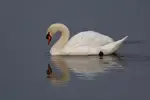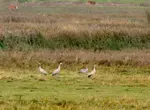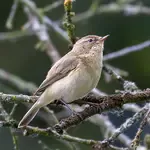- Home
- How to Identify Wild Birds
How to Identify Wild Birds (When You Feel Overwhelmed and Don't Know Where to Start)
If your walks currently feel like a blur of wings and birdsong you can’t quite pin down, this guide will teach you how to identify wild birds quickly and calmly.
You won’t need to memorise Latin names or wrestle with field-guide jargon, just a few simple habits you can use on every walk.
We’ll stick to what you can actually see and hear on real paths in the East of England, turning mystery shapes into familiar neighbours.
By the end, you won’t feel like an outsider scanning the trees; you’ll feel like you’re walking with old acquaintances.
Let's Make Our First Friend: The Robin
Forget field guides and intimidating lists for a moment.
I find the best way to start is to get to know one bird so well that it feels like a familiar face in a crowd. And there’s no better friend to start with than the Robin.
They are one of the UK's most common garden birds, but "common" doesn't mean ordinary.
Robins are bold, full of character, and they have a few secrets to share that teach us almost everything we need to know about observation.
The First Secret: Look for Personality, Not Just Markings
Before you ever notice its famous red breast, you’ll likely notice the Robin’s confidence.
Find a patch of garden to dig, and you'll soon have a companion.
They’ll often perch just a few feet away, head cocked, watching you with a sharp, inquisitive eye. This is their personality—they are curious and bold.
Seeing that behaviour is a form of identification all by itself. It’s a connection you can feel; the moment you stop just looking at the natural world and start feeling like you're truly in it.
The Second Secret: Their Song is a Story
That feeling of being surrounded by a wall of confusing noise is a common frustration for beginners.
So let's listen for just one voice.
Even in the depths of winter, you’ll hear the Robin's song. It’s surprisingly loud and cheerful for a small bird; it’s not just a chirp, but a steady, liquid melody.
You don't need to be an expert to appreciate it. The goal is simply to notice it and let it stand out from the background.
That moment when a confusing sound finally "clicks" into a recognisable name is a thrill that builds confidence.
The Third Secret: The "Red Breast" Isn't the Whole Story
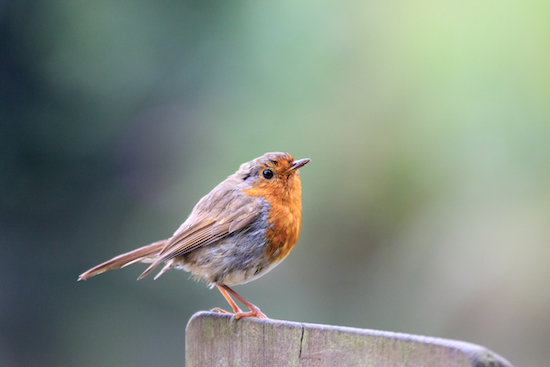 We shared a quiet moment, this robin and I. It had been following me along the path, and just for a second, it paused on this fence post, catching the soft morning light. It’s these small, fleeting encounters that make a walk so special
We shared a quiet moment, this robin and I. It had been following me along the path, and just for a second, it paused on this fence post, catching the soft morning light. It’s these small, fleeting encounters that make a walk so specialWe all know the Robin's famous feature. But here’s how we can look closer and feel like an insider:
- It’s not really red. Look closely and you’ll see it’s a warm, fiery orange. Noticing a specific detail that others miss is a small, satisfying win.
- The real secret: A young Robin, in its first year, doesn't have that orange breast at all. It’s speckled brown all over. If you see one, you're not looking at a different species; you're looking at a chapter in the Robin's life story.
This is the whole process. We’ve started with a single bird and, by noticing its behaviour, its voice, and a few details, we've built a real connection.
We didn't need a textbook; we just needed a little patience and curiosity. This is the foundation for every other bird you'll ever meet
Level Two: Telling Friends Apart in a Crowd
Once you know the Robin, you have a benchmark. You have a mental anchor of size, shape, and personality.
Now, we can use that anchor to meet a new bird that often gets overlooked—the Dunnock.
The Dunnock is a classic 'Little Brown Job,' and for me, it was a source of real frustration.
I have a vivid memory of being on a walk with my husband and confidently pointing out a 'female House Sparrow' under a hedge. Roger, who was just starting to get interested, asked, 'Why is its beak so skinny?'
In that moment, something nagged at me, and I remember thinking, 'That beak does look wrong for a sparrow.' It was too thin, too delicate. That tiny question unlocked the whole puzzle. I wasn't looking at a sparrow at all - I was seeing my first Dunnock.
That little question taught me a huge lesson. I realised I'd been so focused on the general brown-ness that I'd missed the single most important clue.
And that’s when you understand why.
A sparrow has a thick, chunky bill for cracking seeds, but the Dunnock’s is thin and delicate because it loves to eat insects and spiders.
Once you start to learn how to read bird beak types, you’ll spot clues like this everywhere.
The moment you notice that fine, dainty bill, it's more than just an "aha!" moment of recognition; you haven't just identified a bird, you've understood something about how it lives.
You're connecting the 'how' (its appearance) to the 'why' (its life). It’s a humbling and satisfying breakthrough that makes identification feel like a fun puzzle instead of a test I was failing.
The Mission: Look At the Bill
Now it’s your turn to be the detective.
The next time you see a "Little Brown Job," ignore the confusing brown feathers and focus your attention on that one telling detail: the bill.
Is it a chunky, powerful seed-cracker, or is it a fine, delicate insect-eater?
This is your primary clue.
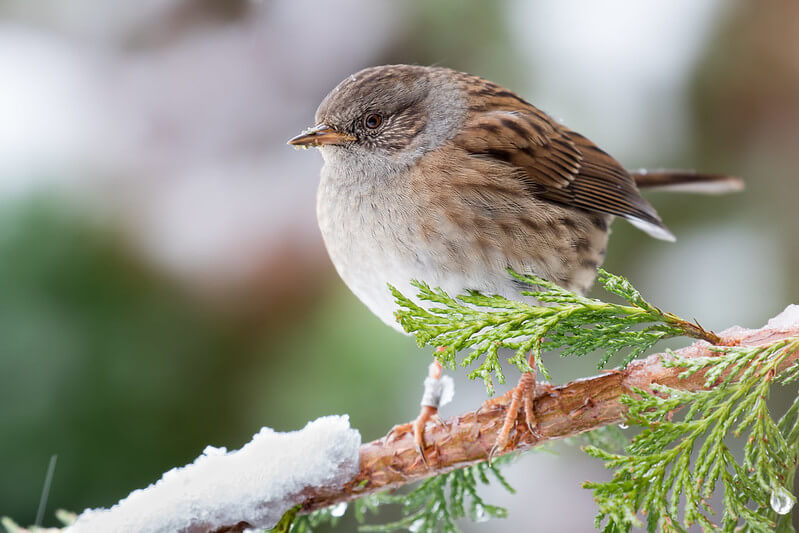 A quiet visitor on a snowy morning. If you look closely at its leg, you can see a small metal ring. This tells us the Dunnock has a history—it's likely part of a study, helping scientists understand the lives of these incredible survivors.
A quiet visitor on a snowy morning. If you look closely at its leg, you can see a small metal ring. This tells us the Dunnock has a history—it's likely part of a study, helping scientists understand the lives of these incredible survivors.
Once you think you've spotted that thin bill, you can look for secondary clues to confirm your suspicion.
Notice its behaviour: if the Robin is a bold, confident character, the Dunnock is its quiet, shy neighbour.
Instead of perching proudly, it’s often seen shuffling on the ground close to cover, like a little brown mouse. This quiet, creeping energy is another great sign that you've found a Dunnock.
Putting It All Together: A Newfound Confidence
Don't worry if you get it wrong at first. I still do sometimes!
But by having a 'friend' like the Robin to compare against, you can start to build your knowledge outwards.
- See a small bird? First thought: "Is it my friend, the Robin?"
- No orange breast? Second thought: "Okay, how is it behaving? Is it bold and loud, or quiet and shuffling?"
- Quiet and shuffling? Third thought: "Let me try and see the bill. Is it thick like a Sparrow's, or thin like a Dunnock's?"
You've just gone from seeing a confusing "LBJ" to following a simple, three-step detective story.
This is how you build that intuitive knowledge you're seeking. You're not memorising a textbook; you're learning to read a landscape and the characters within it, one friend at a time.
From Seeing to Listening: Adding a Soundtrack to Your World
So far, we've been using our eyes to tell our new friends apart.
Now, let's close our eyes for a moment. That "wall of noise" we talked about earlier is about to transform into a conversation, and you already know the speakers.
The goal here isn't to become a master of birdsong overnight. That can feel like an impossible task.
The goal is to do exactly what we did with our eyes: start with one voice and learn its personality.
Some birds even make this first step incredibly easy for you. The Common Chiffchaff, one of the first birds you’ll hear in spring, actually sings its own name in a simple, repetitive song.
Learning to recognise its two-note "chiff-chaff" call is one of the most satisfying and confidence-boosting first lessons in birding by ear. I've written a complete guide to help you find one and tune in to its song.
The Mission: Listen for Your Friends
You now have two friends: the bold Robin and the quiet Dunnock. They speak very differently.
- The Robin's Voice: Remember we said the Robin is confident? Its song reflects that. It's a bright, clear, and surprisingly complex melody, often sung from a high perch like a rooftop or the top of a tree. It sings for much of the year, a resilient soundtrack to the seasons.
- The Dunnock's Voice: In contrast, the Dunnock’s song is much more like its behaviour: a short, hurried, and slightly tinny burst of notes. It's less of a public performance and more of a quick declaration, often delivered from the cover of a bush.
You don't need to memorise the notes.
The "win" is simply in noticing the difference. One is a clear, melodic story; the other is a fast, shuffling sentence.
Hearing that distinction is another "aha!" moment that adds a new, invisible layer to your garden. It’s a powerful way to feel a "deeper connection" to your local patch, even when you can't see the bird itself.
our Next Adventure: The 'Sit Spot'
Here is your next simple, powerful exercise. Find a comfortable spot to sit in your garden or a local park for just five minutes. Close your eyes and listen.
Don't try to name anything. Just notice.
- How many different voices can you hear?
- Is one loud and another soft?
- Is one fast and another slow?
This simple act is a form of mindfulness, a perfect antidote to digital fatigue.
You're not just identifying birds; you're allowing the natural world to quiet your mind.
You are proving to yourself that you have the skills to move from a passive, disconnected observer into a confident, knowledgeable, and fulfilled participant in the world around you.
Meet the Tiniest Bird with the Loudest Secret
Have you ever been in your garden and heard an impossibly loud, energetic burst of song erupting from a hedge, but you can't see a thing?
Chances are, you've just met the Wren.
This bird is a tiny powerhouse, a perfect example of a character you’ll often hear before you see.
Your mission, should you choose to accept it, is to connect that huge voice to the tiny creature that creates it.
The Clue You'll Hear First
Forget trying to spot it in the open. The Wren loves to hide.
It’s a little brown bullet of a bird, constantly firing through the undergrowth and tangled shadows of bushes.
But its song is a bold declaration, a rapid series of high-pitched notes that seems far too big for its body. Learning to recognise that sound is your first step.
The Clue You'll See (If You're Quick!)
For weeks, all I could hear was that powerful song coming from a dense ivy bush.
I would stare at it, trying to find the source, and feel a growing sense of frustration.
Then one day, a flicker of movement. Just as it was about to vanish back into the leaves, my brain snagged on one odd detail: a tiny tail, pointing straight at the sky.
A little voice in my head, born from dozens of past failures, whispered, 'That's it. That has to be it.'
That signature, upright tail was the detail that finally unlocked the puzzle of the giant voice in the tiny body.
Finally spotting that tiny body with its proud, upright tail, and knowing it's the source of that enormous song, was one of my most satisfying rewards in birdwatching.
It's the moment you realise that the smallest characters often have the biggest stories to tell, turning a simple walk into an adventure of discovery.
 And there's the tail! The Wren's classic pose, held straight up like a tiny exclamation mark. This is the detail that helps you spot them even when they're darting through the undergrowth. A small bird with a very big personality.
And there's the tail! The Wren's classic pose, held straight up like a tiny exclamation mark. This is the detail that helps you spot them even when they're darting through the undergrowth. A small bird with a very big personality.You Now Have the Key
If you've followed along this far, something wonderful has happened.
You haven't just learned about a few birds; you've learned how to be a detective. You’ve met the bold Robin, learned to tell it apart from the quiet Dunnock, and discovered the secret of the tiny, powerful Wren.
But the main thing?
You haven't just learned about three birds. You have learned a new way of seeing and listening. You've developed a simple, powerful framework that you can take with you anywhere.
That feeling of being an "uninitiated outsider" begins to fade when you realise the same principles apply everywhere, whether you're looking at ducks on a pond or birds of prey soaring over a cliff:
- Find a 'friend': Start with the most common bird in any new habitat. It even works for birds you think you think you already know. For instance, while most of us recognise a Mute Swan, learning to confidently tell it apart from the two other swan species that visit the UK is a fantastic next-level skill.
- Look for behaviour: Does it glide, or does it flap frantically? Sometimes, that behaviour is so spectacular it becomes a personal story. I once spent an entire season getting to know a single pair of Great Crested Grebes, following their story from their incredible courtship dance to watching their fuzzy chicks hitch a ride on their backs.
- Listen for its voice: Every landscape has its own unique soundtrack, and learning to tune in is special. I'll never forget the moment I first recognised the simple 'chiff-chaff' call from high in a tree. I couldn't see the bird, but I knew a friend was there, and it felt like I'd been let in on a secret conversation happening all around me.
This is how you build intuitive knowledge.
You're not memorising a textbook; you're learning to read a landscape by understanding the characters within it.
You have replaced the "dreaded scenario" of a frustrating, wasted weekend with the "dream scenario" of a confident, restorative adventure.
Your Adventure is Just Beginning
And that’s the real point. The goal I always have in mind isn't just to help you identify a bird; it’s to share that feeling of connection I get every time I step outside. That "thrill of knowing who you share the world with."
It's about finding a fulfilling, mindful hobby that serves as an antidote to the digital world.
You now have the tools. You have the confidence. The only question is, where will you go next?
Perhaps you could take your new skills to a place like Barnwell Country Park, where you can look for the brilliant flash of a kingfisher.
Or maybe you'd like to take your new 'detective' skills to the best walks in Northamptonshire, practicing on the woodland birds there, while also discovering the butterflies and wildflowers along the way.
The choice is yours. The blur has come into focus. The password has been spoken. Welcome to the conversation.
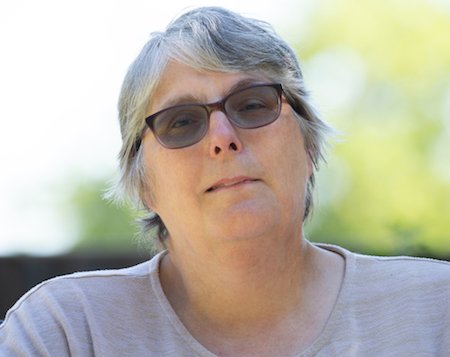
About the Author
For me, it’s never been just about bird names or camera settings, but the thrill of seeing a distant speck turn into a hunting kestrel.
After years of learning how to notice and photograph those moments, my camera has become the tool - and this site the field notebook - where I share what I’ve discovered.
If you’re ready to look a little closer, you’ll find the trips, lessons, and small wins that can help you see and photograph the wildlife right on your doorstep.
Step Behind the Wild Lens
If you've enjoyed your time here, the journey doesn't have to end.
I send out the Wild Lens newsletter on an occasional basis. It's where I share my latest field notes, the stories behind my favourite photos, and practical tips that don't always make it onto the site. It's your dose of quiet magic, delivered right to your inbox.
Join our community of curious explorers.






